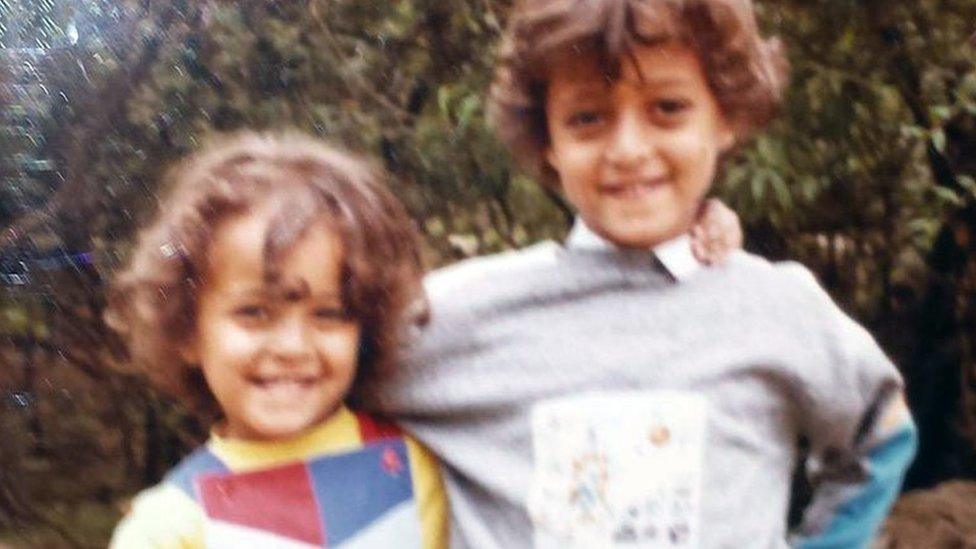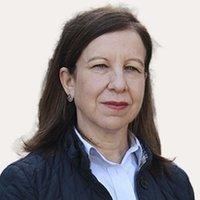Yemen's medical air bridge offers rare glimpse of hope
- Published
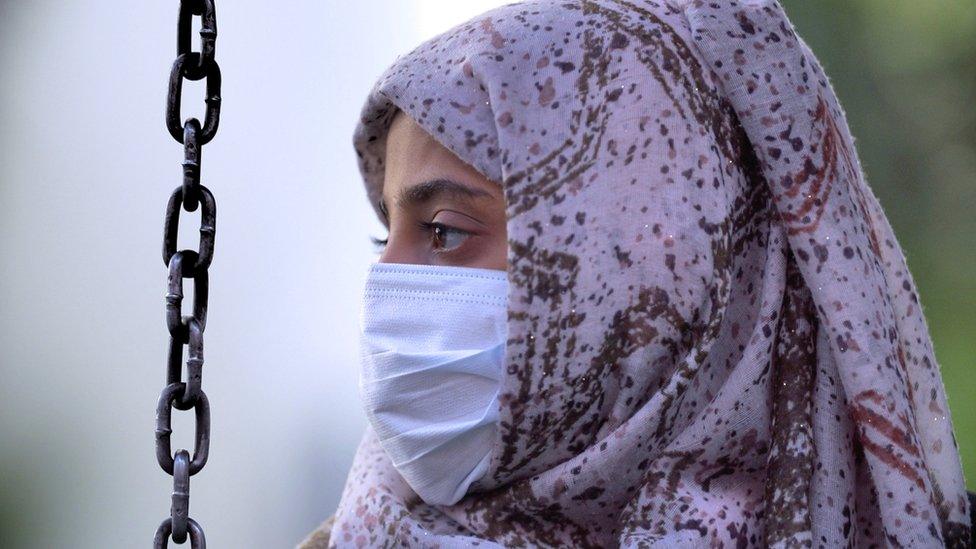
Raghad is on a short list of 30 patients set to fly out of Sanaa as part of a "medical air bridge"
Peals of laughter bounced off the bright yellow walls of an inflatable castle, and the click-clack of children playing air hockey pierced the air.
Thirteen-year old Raghad pushed the plastic puck with all the strength she could muster from her delicate frame. The hint of a smile peeked from her protective face mask.
"She's always been the smartest girl in her class," her father Abdullah proudly informed me as we sat in the garden of a Sanaa hotel where their family and dozens of others have waited months for a long-promised UN flight to get medical care abroad.
"Her health became worse and worse while we waited here," he said with frustration. "Doctors here don't have the capabilities to treat her."
"I love her," Abdullah sighed, his voice breaking mid-sentence. "When she grows up she wants to be a doctor to specialise in orthopaedics to help children just like her."
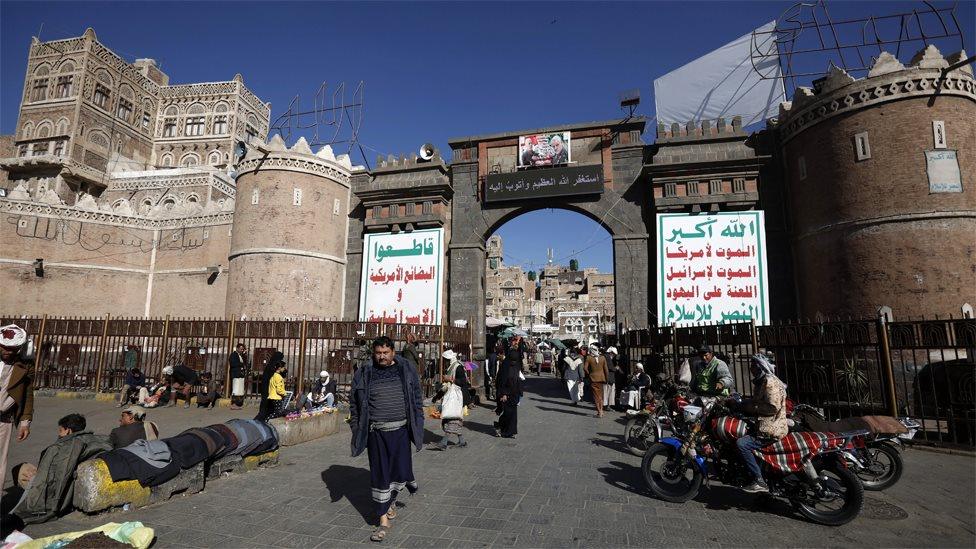
Sanaa has been controlled by the rebel Houthi movement since late 2014
Raghad, who is suffering from cancer, is on a short list of 30 patients set to fly out of Sanaa International Airport as part of this medical air bridge for civilians suffering from conditions that cannot be treated inside Yemen.
A small UN plane carrying the first seven patients left on Monday.
It is a small but significant crack in a more than three-year-long blockade of civilian flights by a Saudi-led coalition backing Yemen's government in its war with the rebel Houthi movement.
If all goes as planned, a series of flights, carrying patients and their caregivers, will leave for Amman and Cairo this month.
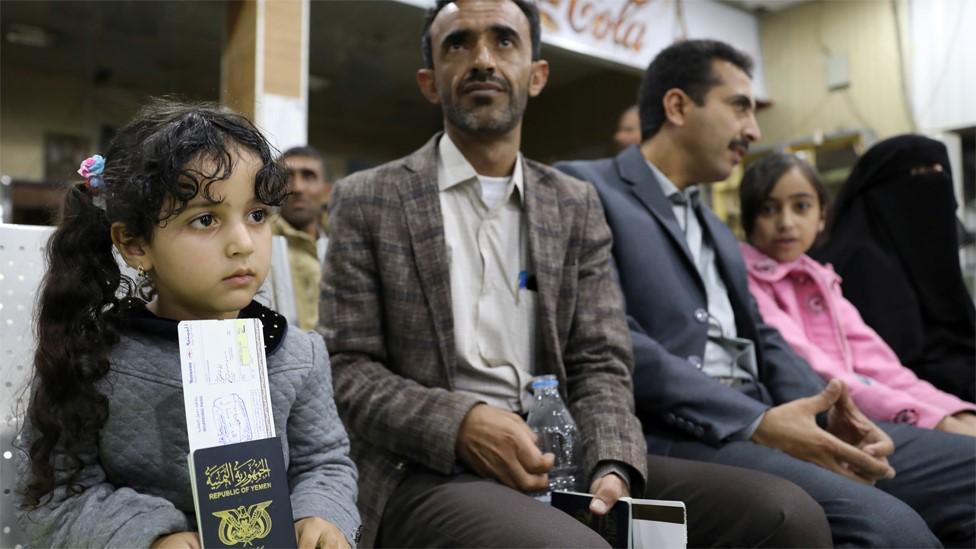
The first seven patients and their carers left Sanaa on a UN plane on Monday
"It's a major breakthrough," said Lise Grande, the UN's resident humanitarian co-ordinator. "It's taken two years of intensive discussions, asking the parties to agree on the modalities."
"It shows that people really do care what happens to Yemenis, they care," she explained when we meet in a heavily guarded UN compound in Sanaa, which is controlled by the Houthis.
It also shows how the littlest and most vulnerable are caught in the poisonous webs spun by a merciless war lurching towards its fifth year.
There are two other international airports in southern Yemen, controlled by the Yemeni government. But they are 15 to 20 hours away from Sanaa on rutted roads winding through mountain passes, threaded by checkpoints of rival fighters.
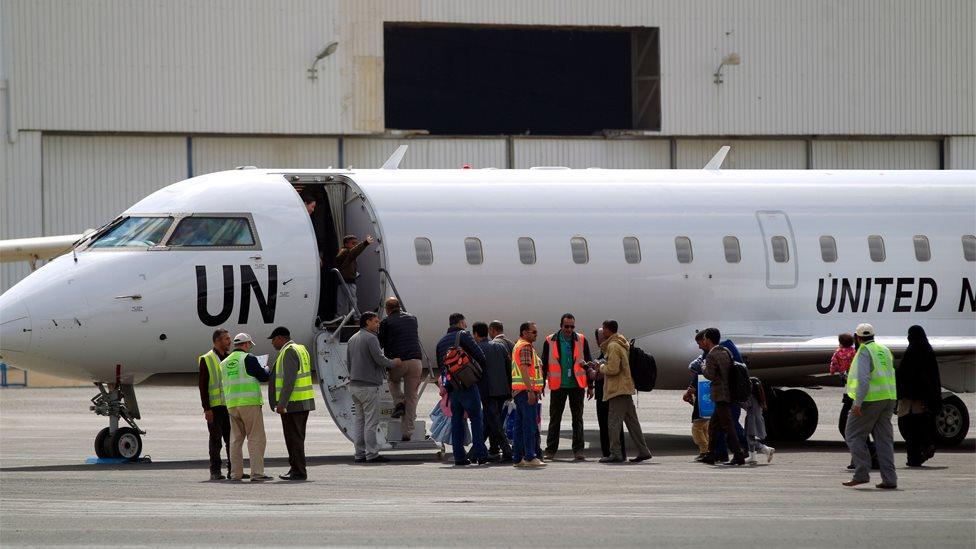
Monday's flight has been described as a major breakthrough in Yemen's war
Days before the first medical air bridge flight, we were taken to an eerily empty Sanaa International Airport.
Houthi leader Mohammed Ali al-Houthi took to this stage, hoisting himself into the back of a pick-up bristling with AK-47 rifles to artfully seize the moment of a rare visit by a foreign news team.
"We brought you to this airport to show you it was targeted, and is now blocked," he declared.
A World Food Programme plane taxied down the runway - only a handful of aid flights are cleared by the coalition, which controls Yemen's air space.
The wreckage of a civilian aircraft, reportedly destroyed in 2016 by a Saudi air strike, was a sprawl of twisted metal sprawled across the edge of the tarmac.
Inside a deserted departures hall only stray cats padded across the gleaming floor. The upstairs lounge was covered in a layer of fine dust, more than three years thick.

Mohammed Ali al-Houthi rejected a coalition proposal to route flights via Aden or Saudi Arabia
Over the past year, the coalition proposed a way out: divert flights via Bisha airport in south-western Saudi Arabia or Aden in southern Yemen to allow aircraft to be searched.
"This airport has its own security procedures, which means civilian aircraft cannot carry weapons," asserted Mr Houthi. "There are satellites, and they have their own spies on the ground, so if there's any movement in Sanaa airport, they can prove it with photos."
The coalition proposal would downgrade Sanaa to a local airport. For the men in charge in Sanaa, sovereignty trumps everything, even human lives.

"We are sovereign and independent and won't be a servant to anyone." Mr Houthi added with a flourish as he strode away to continue this warzone tour.
Saudi Arabia's military spokesman, Col Turki al-Malki, has described the "Flights of Mercy" as a "humanitarian initiative".
"It was also a political concession from the Saudis," said a source involved in the lengthy deliberations. "Senior Saudi officials personally intervened to make this happen."
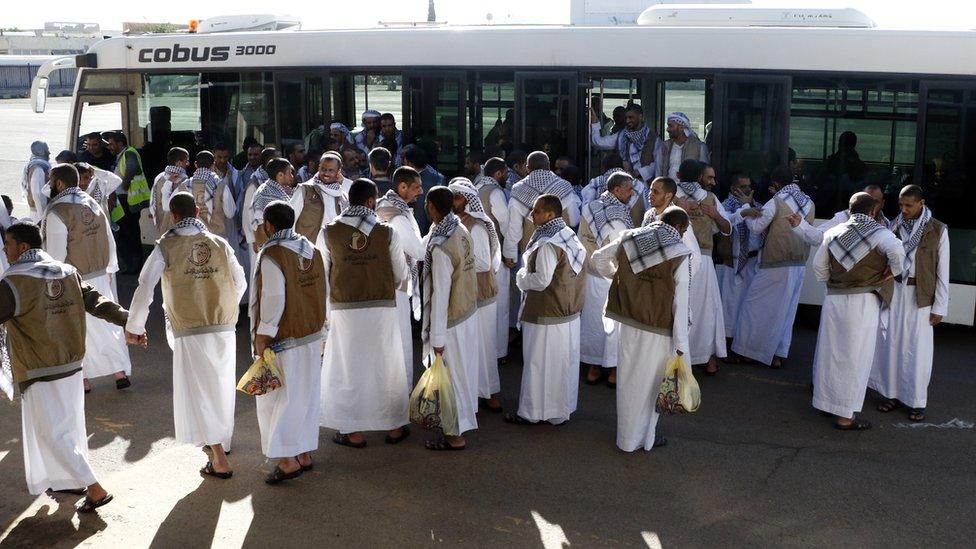
The warring parties have released prisoners as a confidence-building measure
The medical air bridge was given the go-ahead as part of Saudi Arabia's reported shift to de-escalate tensions. That has included holding secret talks with the Houthis, which have been shaken by an upsurge in fighting.
There has also been a frustrating search for countries willing to accept Yemeni patients. Expenses will be borne by the World Health Organization (WHO) and International SOS, but there was worry about families overstaying their welcome.
All the while patients were kept waiting, their conditions getting worse. And the list of patients on a waiting list is said to number more than 30,000.
"When we called families this time to tell them there'd be flights in February, some hung up on us, or angrily informed us the patient had died," a frustrated WHO official told me as she clutched a bulging stack of medical files.
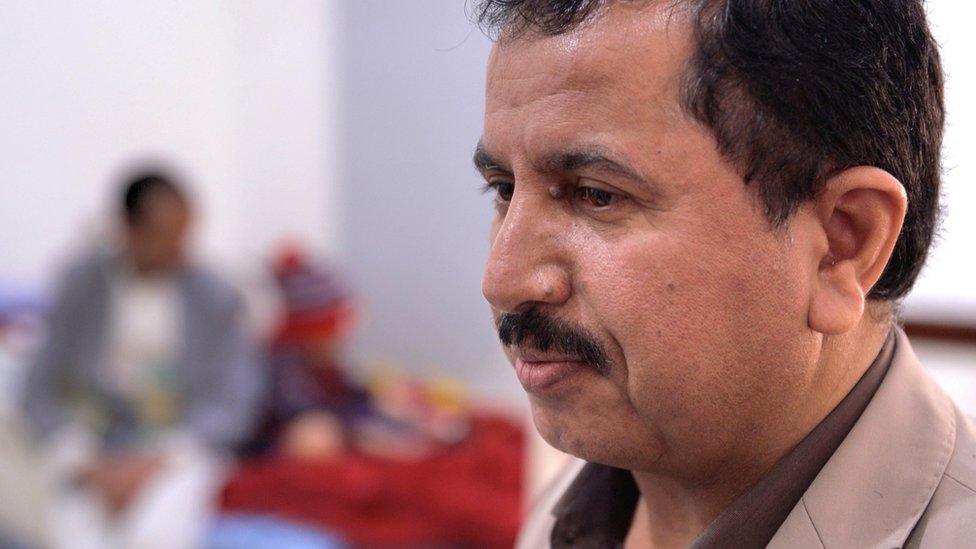
Abdullah Thawaba said it was very difficult to be a doctor in Sanaa
Even doctors at Yemen's only cancer hospital lost hope there would ever be a flight. They stopped making lists of the most urgent cases.
"Many children are dying because they can't travel abroad," said Dr Abdullah Thawaba, director of the National Oncology Centre. "Every year we receive 700 children and some die because they can't get treated abroad."
At this hospital, even the carers need care.
"It's very, very difficult to be a doctor here," Dr Thawaba admitted. "Sometimes we all feel really depressed because we can't give our patients the treatment they need."
Dr Abdullah Thawaba said Yemen's only cancer hospital cannot give children the treatment they need
Six-year-old Muthea wore a plastic spider man watch on his spindly arm, and there was a tiny teddy bear on the striped woollen beanie shielding his bald head.
But there was nothing fun about his vacant stare.
Muthea's father, perched on his son's bed, also wore sadness like a heavy coat.
"Muthea has stomach cancer and can't sleep at night because of his pain," he said.
They have travelled the long road to Sanaa from a town near the embattled port city of Hudaydah on the Red Sea coast.
"It amounts to a death sentence," said Sultana Begum of the Norwegian Refugee Council, which has campaigned for years on this issue. "The use of a blockade has prevented thousands of sick Yemenis from leaving the country for urgent care, and stopped medicines and equipment from getting in."
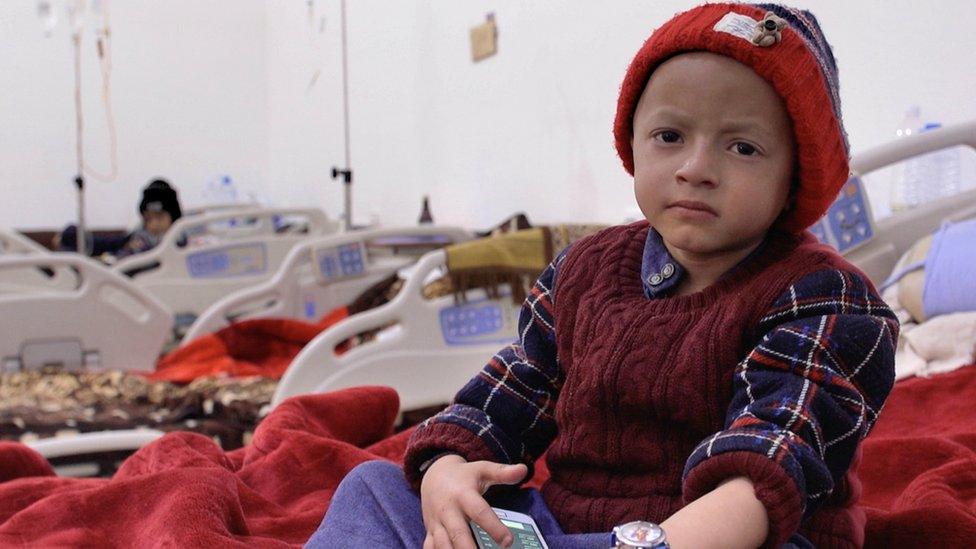
Muthea cannot sleep at night because of his pain
At a sprawling Sanaa cemetery, 17-year-old Awab washed his father's grave and placed fresh flowers on the dull, grey stone.
"My father had cirrhosis of the liver for 13 years," he said. "But then he couldn't find the medicine and his condition got worse and worse."
"For two years, they kept promising he would be on a UN flight," he added bitterly.
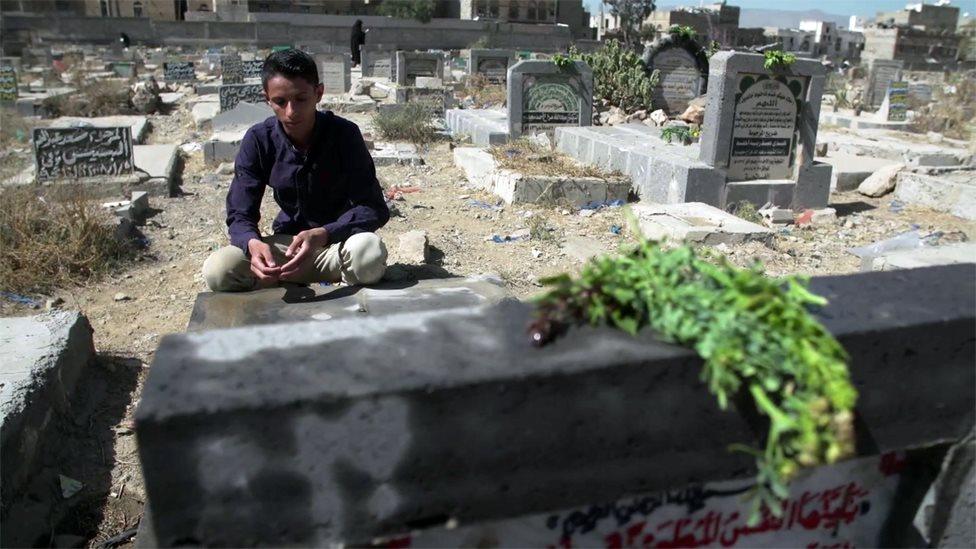
Awab said his father died while awaiting medical evacuation
This medical air bridge is a glimpse of hope in the world's worst humanitarian crisis - a hope so rare, many still fear it won't proceed as planned.
- Published10 July 2019
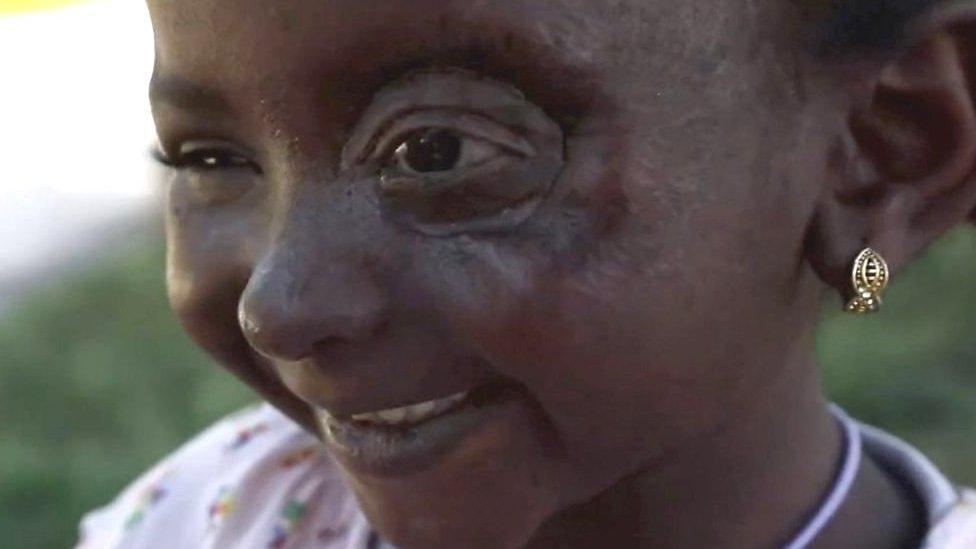
- Published1 August 2019
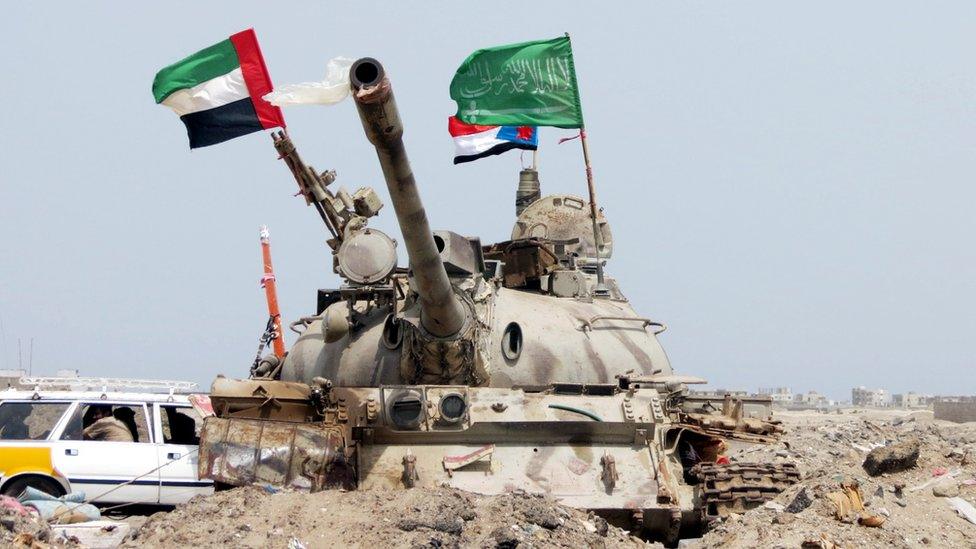
- Published14 April 2023
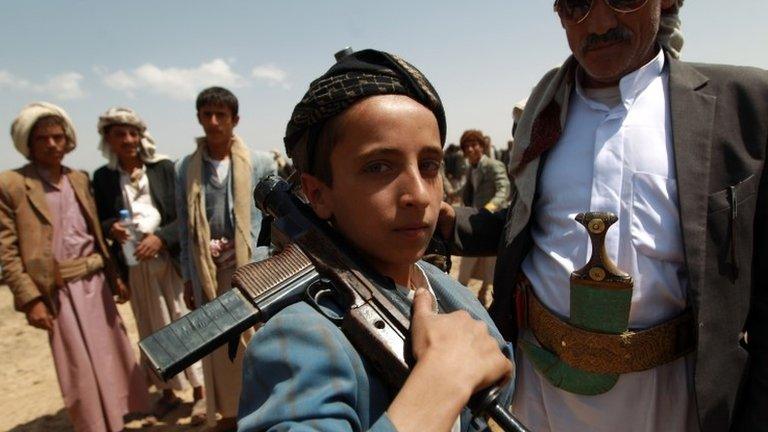
- Published13 June 2018
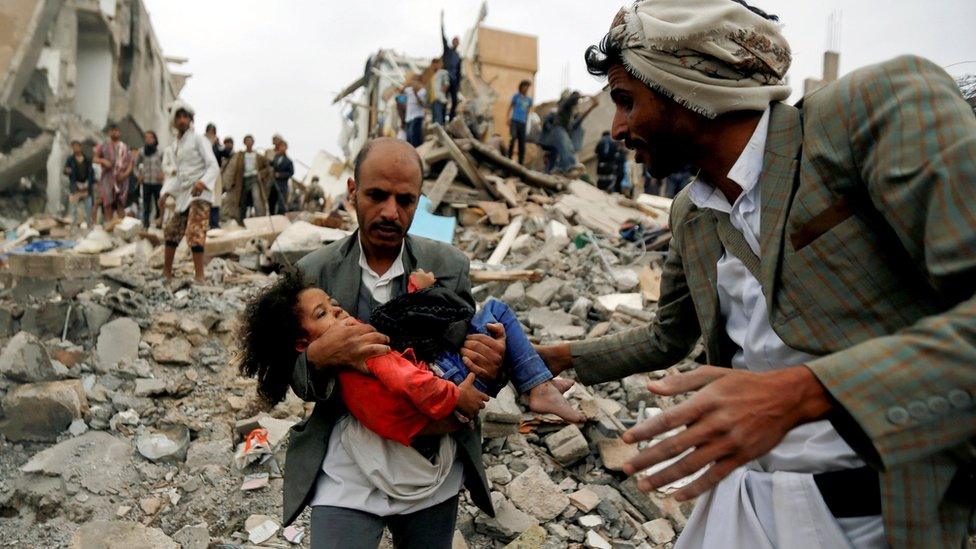
- Published26 March 2017
